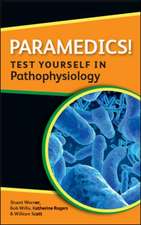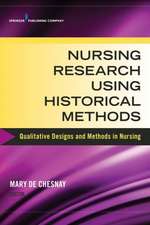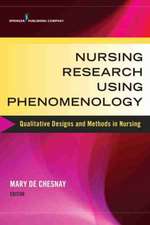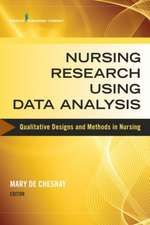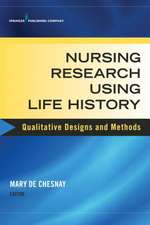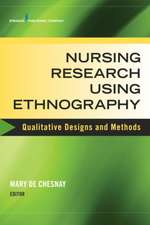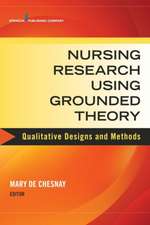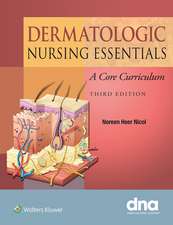Sex Trafficking: A Clinical Guide for Nurses
Editat de Mary De Chesnay, Mary Chesnayen Limba Engleză Paperback – 19 dec 2012
Awarded third place in the 2013 AJN Book of the Year Awards in the Community-Public Health category
A]n indispensable volume for nurse educators to use to help to inform new generations of nurses about the topic of sex trafficking...What is striking about this book is its readability. It draws the reader into the chapters with its engaging scenarios and pertinent information... A highly readable guide to sex trafficking for U.S. nurses and other health care professionals." -- Journal of Transcultural Nursing
This is a valuable resource for emergency departments everywhere It is the gold standard for information about this topic."--Doody's Medical Reviews
This excellent text puts forensic nurses in an excellent position to make an impact one of the 27 million people who are victims, just in the United States, of sex trafficking crimes. It is incumbent on the forensic community to take a stand and lead a charge in first learning about and then putting into action a plan to give a voice to the victims, caring for them as our patients and developing a strategy to help end this crime. This book will help to create the awareness and passion that is needed to accomplish just that."--Forensic Nursing News
The statistics are staggering: nearly 27 million people worldwide are currently victims of human trafficking, most frequently girls between the ages of 12 and 14. This is the first clinical guide to assessing and treating victims of sex trafficking, encompassing best practices and strategies for overcoming the severe barriers that this group presents. These barriers most notably include separating victims from their pimps/handlers who exert tight control over their lives, speech, and interactions with healthcare providers.
At the heart of the book are consistently organized chapters addressing the major injuries, diseases and psychological traumas for which trafficked victims are likely to seek treatment. These chapters include a description of each condition, culturally based best practices for treatment, special considerations for male, female, and child victims, and expected outcomes. Citing the specialized circumstances of this population, the book discusses how to adapt current treatments to the special needs of these young victims. Additional features include case studies, short bullet points, and easy-to-follow recommendations. The book also discusses human trafficking as a global issue with particular attention to the United States. The guide describes the countrywide resources available for practitioners to learn about sex trafficking in the United States, focusing on Georgia as the only state to offer a comprehensive approach to sex trafficking and a model for the rest of the country. It also addresses health policy implications for practitioners and how to harness the support of law enforcement entities. Key Features:
Provides best practices to date in a concise reference-style guide to medical and psychological assessment and treatment of sex trafficking victims Includes case studies and easy-to-follow practice recommendations Describes strategies on overcoming handlers' control over their victims Provides phone numbers and contact information by state or region regarding how to safely involve law enforcement
Preț: 470.33 lei
Preț vechi: 495.09 lei
-5% Nou
90.08€ • 92.81$ • 75.46£
Carte tipărită la comandă
Livrare economică 24 februarie-10 martie
Specificații
ISBN-10: 082617115X
Pagini: 400
Dimensiuni: 152 x 226 x 23 mm
Greutate: 0.54 kg
Ediția:New.
Editura: Springer
Notă biografică
Textul de pe ultima copertă
The statistics are staggering: nearly 27 million people worldwide are currently victims of human trafficking, most frequently girls between the ages of 12 and 14. This is the first clinical guide to assessing and treating victims of sex trafficking, encompassing best practices and strategies for overcoming the severe barriers that this group presents. These barriers most notably include separating victims from their pimps/handlers who exert tight control over their lives, speech, and interactions with healthcare providers.
At the heart of the book are consistently organized chapters addressing the major injuries, diseases and psychological traumas for which trafficked victims are likely to seek treatment. These chapters include a description of each condition, culturally based best practices for treatment, special considerations for male, female, and child victims, and expected outcomes. Citing the specialized circumstances of this population, the book discusses how to adapt current treatments to the special needs of these young victims. Additional features include case studies, short bullet points, and easy-to-follow recommendations. The book also discusses human trafficking as a global issue with particular attention to the United States. The guide describes the countrywide resources available for practitioners to learn about sex trafficking in the United States, focusing on Georgia as the only state to offer a comprehensive approach to sex trafficking and a model for the rest of the country. It also addresses health policy implications for practitioners and how to harness the support of law enforcement entities. Key Features:
Provides best practices to date in a concise reference-style guide to medical and psychological assessment and treatment of sex trafficking victims Includes case studies and easy-to-follow practice recommendations Describes strategies on overcoming handlers? control over their victims Provides phone numbers and contact information by state or region regarding how to safely involve law enforcement "



